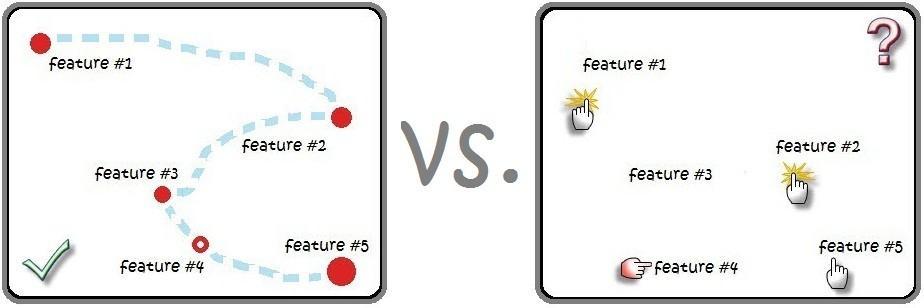
In this post, we will try to compare Scripted and Exploratory styles of software testing. On the third hand, scripted testing is seemed as a strict and serious process and exploratory one is seemed free and easy. But each test style has own swings and roundabouts. Let’s look at them from different points and try defining appropriate conditions to use first one and second one.

Scripted testing usually supposes two roles: test-designer and tester. Test-designer creates test scenarios beforehand: and then tester executes these test scenarios. Test-designer is a high skilled specialist and tester is a beginner at software testing.
Exploratory testing doesn’t divide activities by roles and time. Tester thinks up test cases himself, executes them at once and according to the test results, he creates new test cases. It’s obviously, that such tester must be an experienced specialist.
In case of scripted testing, your test team can consist of one high skilled test-designer (costly employee) and several beginners (low-paid workers). You will economize resources, new testers (even low skilled) can start working rapidly enough. Exploratory testing depends on qualification a lot. If tester has low qualification, he will use ad hoc testing in the guise of exploratory one.
Scripted testing gives you facilities of high planning and predictability. If we have ready test scenarios, we can estimate efforts on tests executing precisely enough. In case of exploratory style, planning is very difficult or impossible at all. There’s no guaranty, too, that tester will execute all needed tests and not forget anything.
Scripted tester can give qualitative documentation. At least he can give test scenarios and reports about execution of this scenarios. Exploratory testers often have complications with reports. How can tester report what he has tested and how many tests still remain? How can manager show to customer what has been tested?
So according to reasoning above, scripted testing comes to the fore. Let’s find a few advantages of exploratory style.
Exploratory testing is flexible and adaptive to changes unlike scripted one. If something changes in the application, test-designer must alter test scenarios, otherwise tester can’t execute tests. Exploratory tester has test suits in own mind, so he can change them as fast as needed.
Basic work of scripted tester is boring and monotonous. Exploratory tester has interesting and creative tasks. He does different kind of work, he is designer and executor, so his work is not routine.In case of exploratory style, tests are created and executed almost simultaneously, so it lets starting tests execution and uncovering bugs earlier.
In the end, I will cast one more disadvantage of scripted testing. It’s the pesticide paradox. If the same tests are repeated over and over again, eventually they will no longer find any new bugs.
In my opinion, it’s not correct to consider that one test style is better than another. Each style can be suitable or not in dependance of goals, test process organization, customer requirements and other reasons.